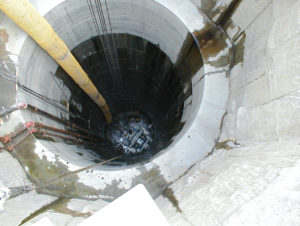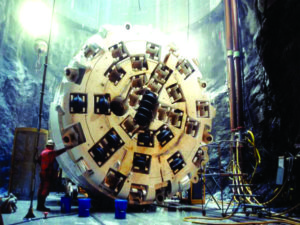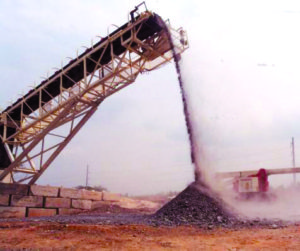![65 Years of Innovation and Experience [default]](https://www.robbinstbm.com/wp-content/uploads/2017/04/Side-Bar-Blue-Blocks_70-Years.jpg)
A Solution for Every Condition: Search our Project Database
Project Map
FEATURED PRODUCT: CROSSOVER MACHINES
Our History
A Legacy of Innovation
Information 24/7
News & Media
Insights in the Industry:
Read the Robbins Blog
 The Chattahoochee Sewer Tunnel is part of a project that meets increasing wastewater capacity needs in East Cobb County. The tunnel provides flow equalization to the RL Sutton Water Reclamation Facility and curbs potential wastewater overflows due to the growing population in Cobb County.
The Chattahoochee Sewer Tunnel is part of a project that meets increasing wastewater capacity needs in East Cobb County. The tunnel provides flow equalization to the RL Sutton Water Reclamation Facility and curbs potential wastewater overflows due to the growing population in Cobb County.
In 2000, project owner Cobb County Water Systems awarded the construction contract to the Gilbert-Healy Joint Venture. The contractors selected two 5.58 m (18.3 ft) diameter Robbins TBMs to bore a 14.6 km (9.1 mi) long section of the 15.3 km (9.5 mi) tunnel.
The geology of the Atlanta area consists of medium grade metamorphic rocks with some granitic rocks. Much of the rock includes gneiss, mica, and schist with an Unconfined Compressive Strength (UCS) of 150 – 230 MPa (22 – 33 ksi). These rocks have undergone intense weathering and erosion with some regional uplifting.
A key characteristic of the region is a thick layer of residual soil with a transition zone of soil and fractured rock underneath it. This geology posed groundwater problems for the tunnel because the soil zone is porous and water leaks into the fractured transition zone below. Faults in the bedrock can thus have very large water inflows.
Tunnel designers grappled with the difficult geology by pre-testing the rock along the tunnel area using packer tests. A section of rock was bored out and water was injected into the bore hole under pressure. In this way, bedrock permeability could be tested.
 Robbins provided one new and one rebuilt TBM for the tunnels.
Robbins provided one new and one rebuilt TBM for the tunnels.
The new TBM for the South tunnel featured 19 inch (483 mm) cutters and generated up to 12,144 kN (2,730,000 lb) of cutterhead thrust. The machine was also capable of creating a cutterhead torque up to 2,082,885 N-m (1,536,257 lb-ft).
The rebuilt TBM for the North tunnel was completely redesigned for the project. The machine included 19 inch (483 mm) cutters and the same thrust and torque capacities of the South tunnel TBM.
Each machine was fitted with three rock drills — two behind the cutterhead to install rock bolts as well as one for drilling probe holes and pre-grouting holes to seal off any water inflows.
The conveyors, provided by Robbins, were continuous conveyors that ran along the tunnel as well as in the access shaft.
 The TBM in the South tunnel began boring at the Elizabeth Lane shaft near the south end of the tunnel in August 2001 and finished in October 2002. The TBM experienced few problems and advanced 650 m (2,133 ft) in its first month of boring.
The TBM in the South tunnel began boring at the Elizabeth Lane shaft near the south end of the tunnel in August 2001 and finished in October 2002. The TBM experienced few problems and advanced 650 m (2,133 ft) in its first month of boring.
The TBM in the North tunnel began boring in November 2001 and finished in December 2002. It also experienced few problems and completed its task on time and within budget.
Pumping facilities in both the North and South Tunnels were capable of removing up to 18,000 liters (4,750 gallons) per minute, although the expected water inflows were much smaller — up to 1,800 liters ( 475 gallons) per minute. The pumping systems were precautionary and sufficient to control the water inflows encountered.

 Close
Close